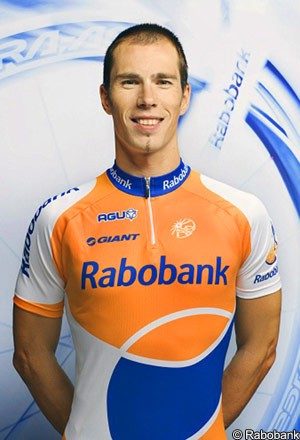Spanish former-rider talks of his life after cycling and his impressions of the sport today
 Pedro Horrillo was forced to retire at the end of 2009, at the age of 35, after a near-fatal crash in that year’s Giro d’Italia. He lost control of his bike on the descent of the Culmine di San Pietro, leaving the road, and fell almost 60 metres; while his injuries were not said to be life threatening, he was never to recover well enough to rejoin the peloton. In an interview with Spanish sportspaper Marca, Horrillo talks about his experiences since the crash, and his feelings about the sport he has left.
Pedro Horrillo was forced to retire at the end of 2009, at the age of 35, after a near-fatal crash in that year’s Giro d’Italia. He lost control of his bike on the descent of the Culmine di San Pietro, leaving the road, and fell almost 60 metres; while his injuries were not said to be life threatening, he was never to recover well enough to rejoin the peloton. In an interview with Spanish sportspaper Marca, Horrillo talks about his experiences since the crash, and his feelings about the sport he has left.
“Even though I stopped being a professional cyclist after the accident, in the hospital and the rehabilitation phase I remained a rider,” he explained. “When I sat on a bike it was a very special moment. I trained with professionals and they said that I enjoyed the bike more than they did.”
Horrillo hardly remembers the accident itself, having been found by teammates who had been dropped on the previous climb when they saw his bike on the road.
“I have no recollection,” he said. “I awoke in a hospital and after the ‘shock’ I realised what had happened,” he said. They said I braked just in time because few metres further and I would have fallen 20 metres more and not survived.”
While he has survived his injuries, it soon became clear that he would never recover sufficiently to retake his place in the peloton.
“The doctors had the long-term goal of my returning to professional cycling,” he said. “My contract with the team ended in December 2009 and the rehabilitation phase began in July. The months passed and my recovery was quicker than usual, but I could not ask for miracles.”
The Spaniard was offered a contract extension by Rabobank, since his existing contract expired at the end of 2009. As it became obvious that he would not be able to perform at his previous level though, he decided not to accpept.
“The first weeks of December were tough because I had to make a decision and it was not clear,” he continued. “My question to the doctors was: ‘Do you think I’m going to regain the level that I was at before?’ and they all told me that no, it was ‘impossible’. I was going to come a point where the improvement was going to end.”
He informed the team of his decision that month and in January 2010, at the team’s presentation in Rotterdam, Netherlands, it was announced that he would be retiring from the sport. The decision was his alone though, and things were made easy for him by the team, he says.
“There was no need to force the situation and it wasn’t like stepping on quicksand,” he explained.
Although Horrillo still rides regularly with a number of professional riders, his retirement is emphasised to him when the races come around.
“I realise I am not a professional when they leave and I stay at home,” he said. “Then, I realize that for me there will be no more races; that my life is what I have at home. I see from the other side of the barriers, but with one foot inside. And what I’ve seen in recent years I haven’t liked.
“The doping scandals have done a lot of damage to cycling, and sometimes it’s not self-critical.”
The sport has changed though, he says, with the problem of doping much less serious than it was when he first became a professional rider.
“There has been a work of purification,” he said. “Cycling today is cleaner, purer and healthier than it was 10 or 15 years ago; but the public image we have is much worse than it was 10, 15 or 20 years ago.”